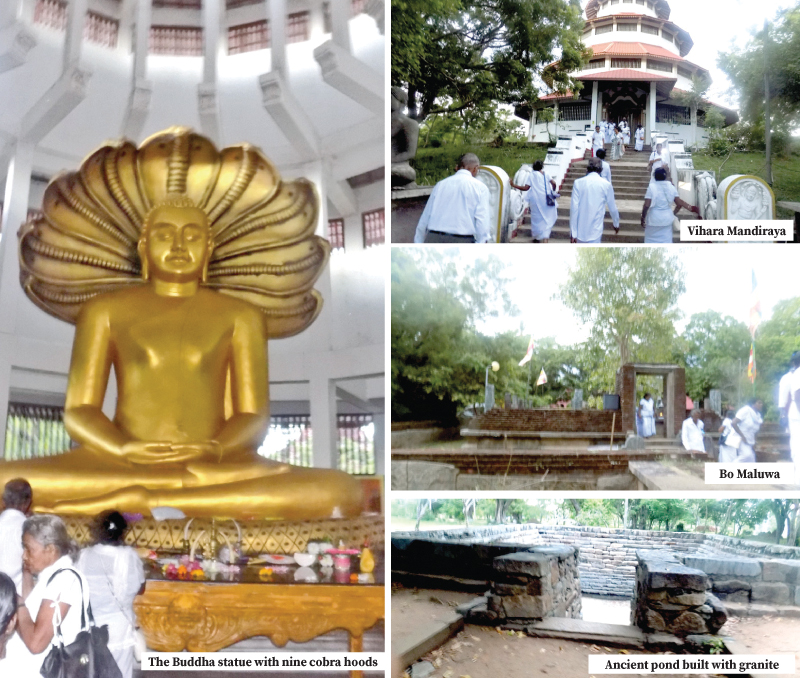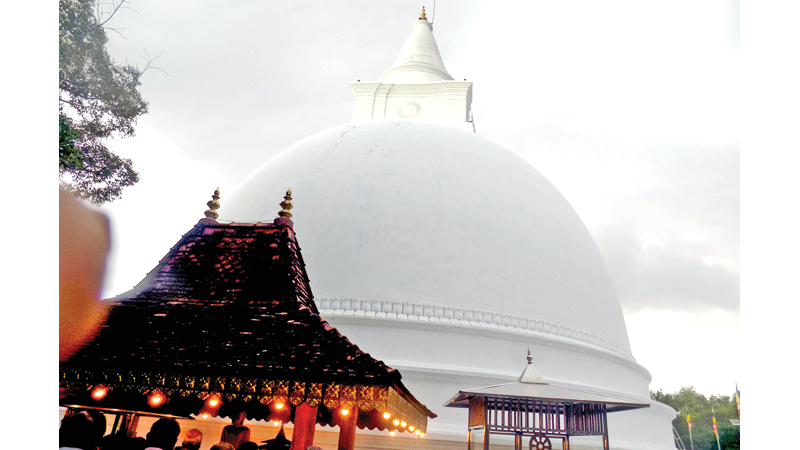Seruwila Mangala Raja Maha Vihara is an ancient Buddhist Temple in the Trincomalee district. It was built during the reign of King Kavantissa, Prince of Ruhuna (2nd Century B.C. ) enshrining the Lalata Dhathu (Sacred forehead bone) of the Buddha.
According to Dr. R.L.Brohier, this region was a swamp or villu where the flood waters of the Mahaweli ganga were collected. This villu was the home for a large flock of teals Seru during the migrating period. That perhaps was how the place came to be known as “Seruwawila”
It has been mentioned in the Dhathuwansa as well as in Jinakalamalee which was printed in Siam that the Lalata Dhathu of the Buddha was enshrined in Seruwila Stupa.
Lost in history covered by a thick jungle infested with wild animals exposed to the elements for thousands of years, the sacred site was brought back to life by Ven. Dambagasare Sri Sumedhankara Thera in 1922. The Thera restored the Stupa with the assistance of the Department of Archaeology and the permission of the English government using the remains of the ancient structures around the Stupa. The conservation work was completed in 1931.
The stupa and its environs covering approximately 85 acres were declared as an Archaeological Reserve in 1962. After that, the Department of Archaeology started carrying out conservation work by stages.
In view of the importance of this sacred shrine and also to attract more and more pilgrims to the area, the Department of Town and Country Planning drew up a plan for the development of a new town including pilgrim rests and market areas during the 1970’s.
Chief Incumbent of the temple Ven. Seruwila Saranakiththi Thera said that Seruwila had been a great sacred site of the Naga Tribe in ancient times.
A Buddha Statue with nine cobra hoods and another with seven cobra hoods had been discovered through excavations carried out on the site. Another statue which is believed to be the statue of King Kavantissa has also been found.
There is evidence that Arahants have resided in the caves around the Stupa terrace in the vicinity of the Dagoba as indicated in an ancient inscription that dates back to the 2nd century B.C.
This sacred site is reachable both by land and by sea. The sea route begins at Trincomalee to Mutur by boat and the land route is via Kanthale to Allai which is approximately 45 k.m. through the dense forest.










